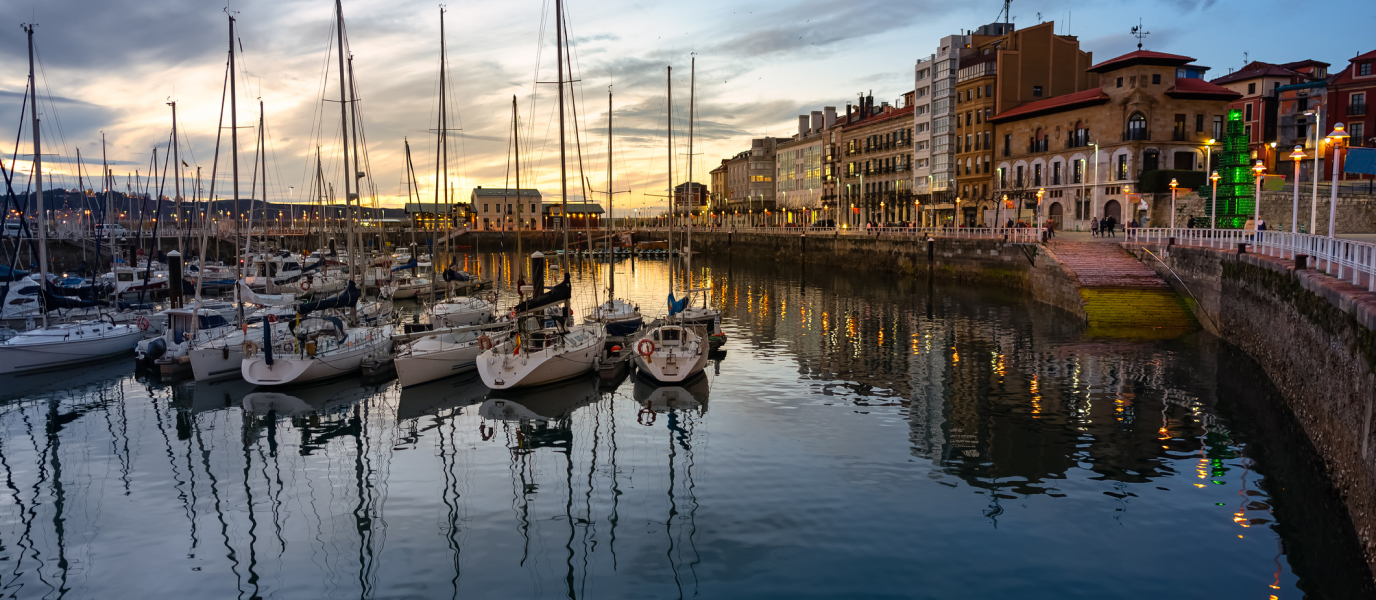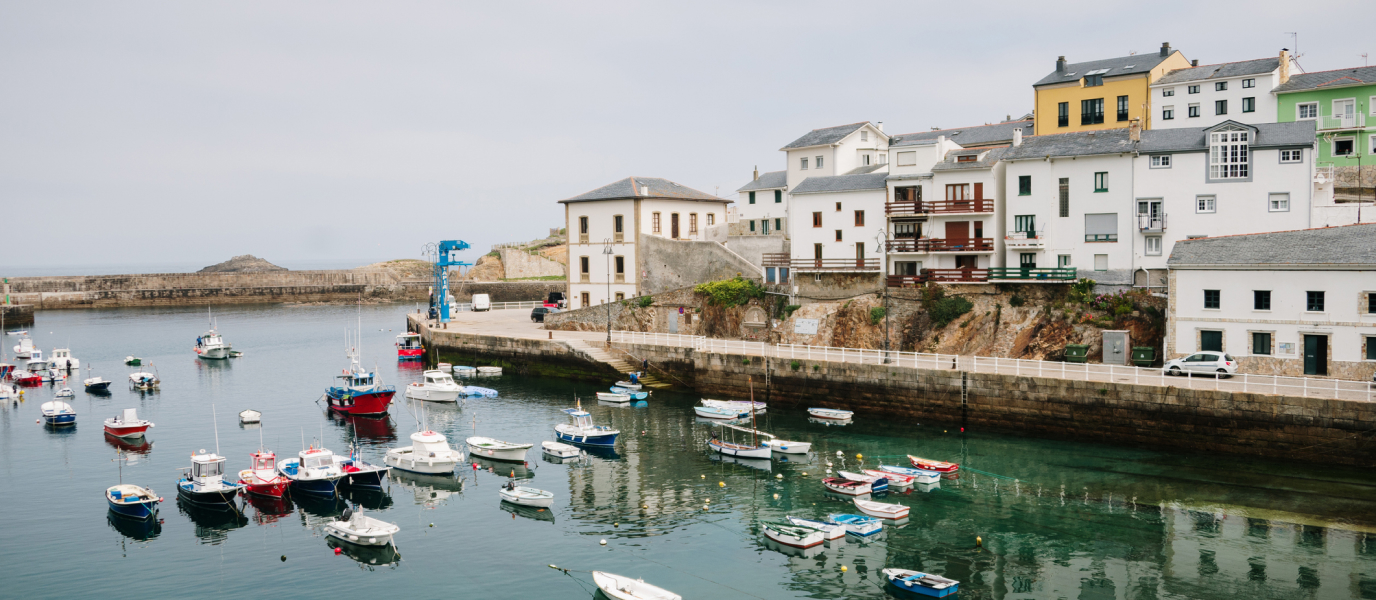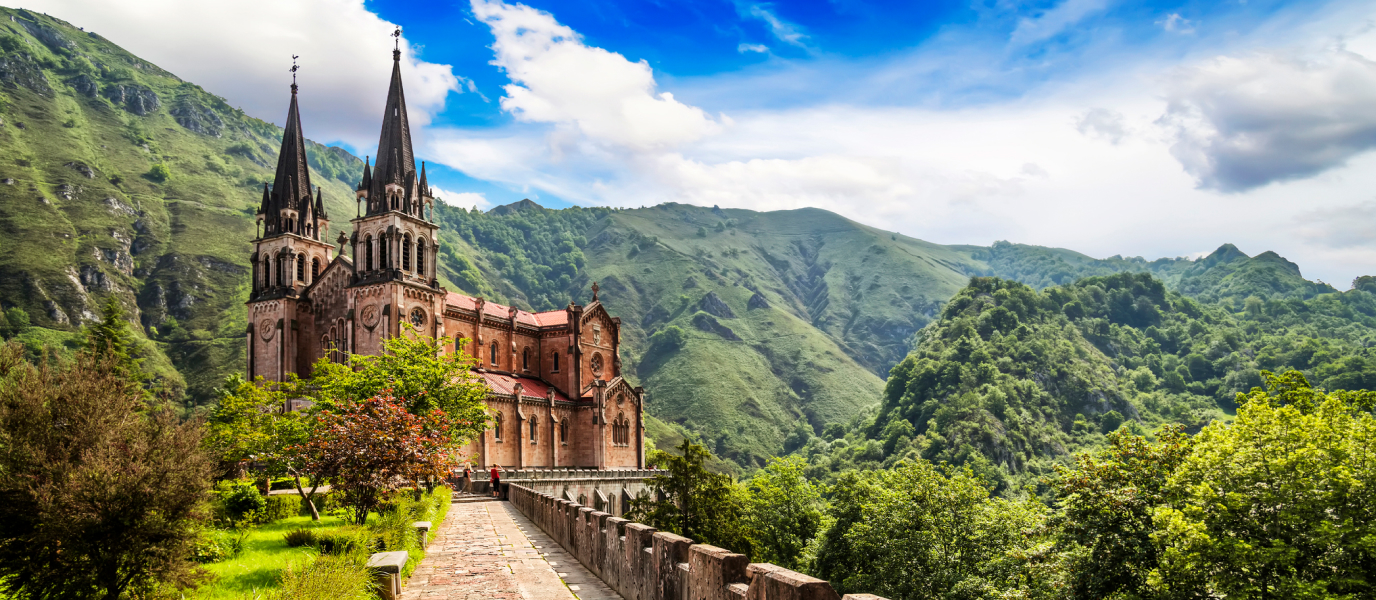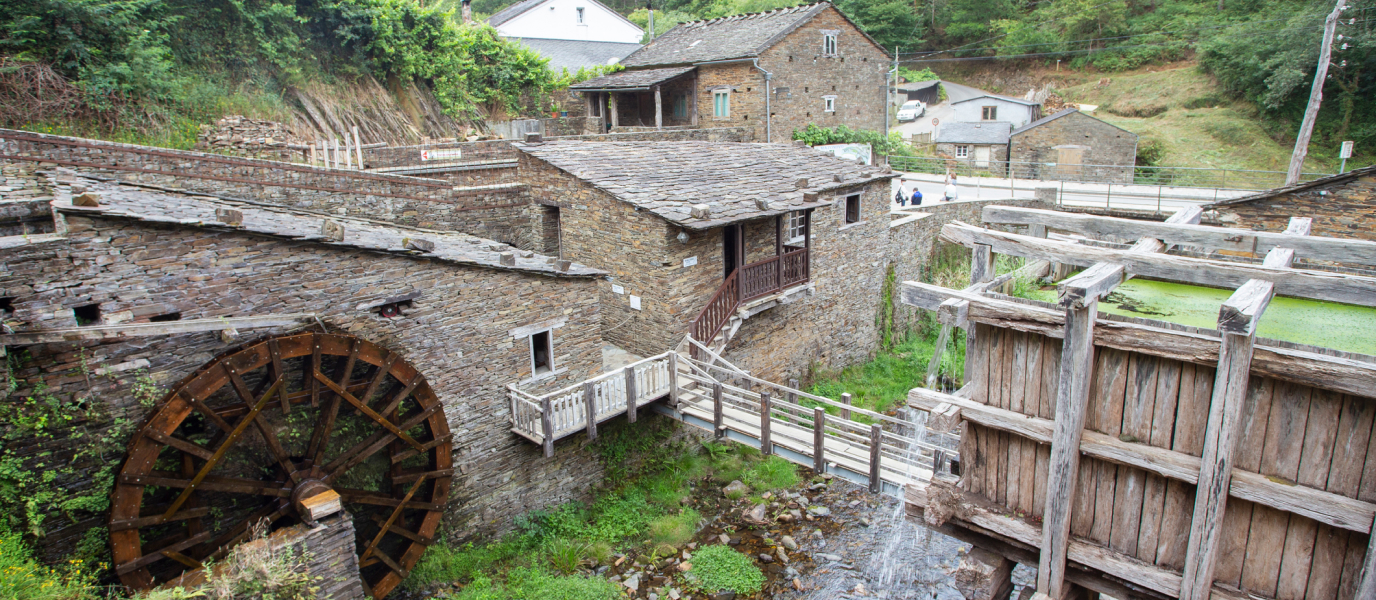Gijón is the largest city in Asturias and offers such a long-list of worthy attractions that visitors may need to pick and choose. Some must-see landmarks include the old fishermen’s quarter of Cimadevilla, located on the rocky headland of Santa Catalina. Head to the top the promontory to see Eduardo Chillida’s stark sculpture Eulogy to the Horizon and take in the magnificent views of the Cantabrian Sea. Walk down La Escalerona, (‘the Steps’), an iconic public monument leading down to the urban beach of San Lorenzo. There is also the Cultural Centre of Asturias, located at the stunning UNESCO World Heritage Site, Universidad Laboral de Gijón. The now booming commercial port of El Musel used to attract whales when they thrived in the Cantabrian Sea.
What to see and do in Gijón
Be sure to pencil in the following landmarks and monuments to see on your trip to Gijón!
Cimadevilla
- San Pedro Church: Destroyed by bombs during the Spanish Civil War and rebuilt in 1954, the church stands at the tip of the headland, at the end of San Lorenzo Beach, and is visible from anywhere around the Bay of Gijón. While there, make sure to check out the best-preserved Roman remains in northern Spain, Campo Valdés Roman Baths that date back to 100 AD. A statue of Augustus stands on the seaside promenade in tribute to the Roman Emperor and founder of the city.
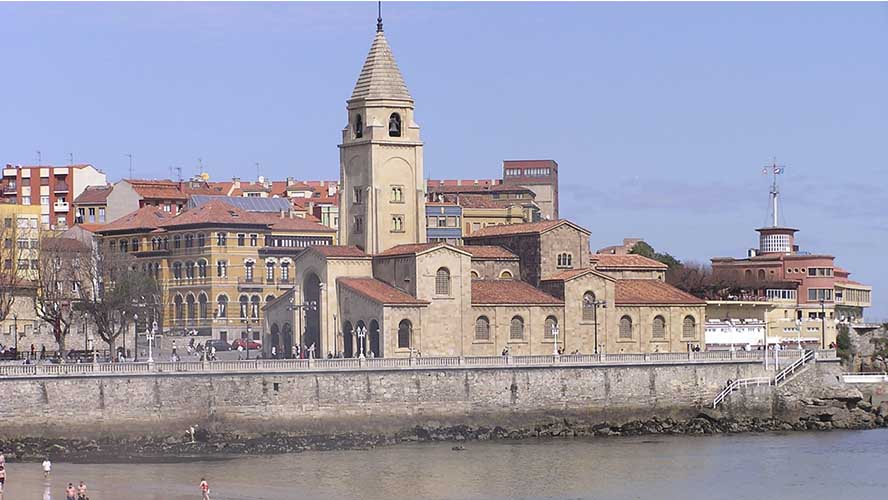
- The Statue Eulogy to the Horizon on headland of Santa Catalina: Take a short walk through the grassy park that separates San Pedro Church from the headland of Santa Catalina to discover Eduardo Chillida’s monumental statue Eulogy to the Horizon, looking out over the Cantabrian Sea. The concrete structure is shaped in an incomplete circle that seems to be embracing the sea – it is one of the most photographed monuments in Gijón. No matter where you stand, the monument will catch your breath. From this viewpoint, you’ll be able to see the restored beach of Playa de Poniente and the lovely harbour to the west; and the splendid beach of San Lorenzo to the east, flanking the edge of the popular old quarter of Cimadevilla.
- Revillagigedo Palace: Located next to the marina stands the magnificent 18th century Baroque Revillagigedo Palace, adjacent to the also Baroque collegiate Church of San Juan Bautista. The palace was originally composed of a single medieval crenelated, four-storey tower. Then, an identical tower was added, followed by a lower three-storey structure to connect the two towers. Today, the palace houses the Cultural Centre of Cajastur.
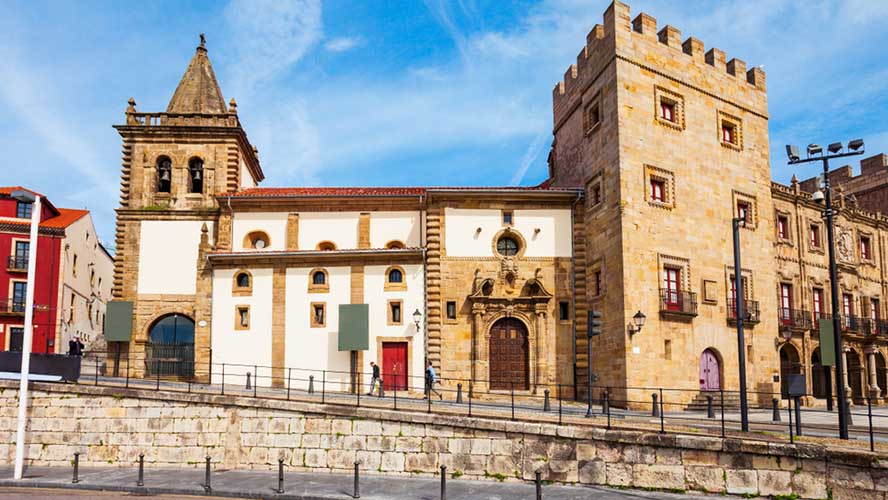
- Museum of the Asturian People (Muséu del Pueblu d’Asturies): The museum offers interesting exhibits on Asturian culture and heritage. Learn about the traditional Asturian way of life and see a typical country home, a cider press, a windmill and a grain store. You’ll also see ancient farming machinery and carts. The open-air space contains three buildings: Casa de los González de la Vega (1757), site of the International Bagpipe Museum; Casa de los Valdes (17th century), a temporary exhibition space; and the Asturian Pavilion from the 1992 Universal Exposition of Seville.
- Monument to the Mother of Migrants: The acclaimed Spanish sculptor Ramón Muriedas created the statue in 1970 as a tribute to Asturian mothers who saw their children sail away to the Americas in search of a better life. The statue of a heart-broken woman looking out at sea, outstretching one of her arms, is located on the eastern edge of San Lorenzo beach on Paseo del Rinconín.
The aquarium and the top beaches of Gijón
- San Lorenzo Beach: Located between San Lorenzo Church and the mouth of the Piles River, this 1.5-km urban beach is surrounded by a cast-in-place stone seawall to protect the beach during storms. There are 15 numbered access points along the promenade leading down to the beach. The most popular La Escalerona is located at access point no. 4 and includes a weather tower.
- Playa de Poniente: Located by the marina, the restored 500-m stretch of sand used to form part of the port but got a facelift to revitalise the area. Today, it is a popular destination among locals and visitors alike. At one end of the beach, you’ll find a thalassotherapy centre and the Aquarium of Gijón.
- Aquarium of Gijón: Located at one end of Playa de Poniente¸ the modern wood and metal aquarium houses 4,000 different species from the four corners of the world. You’ll see Magellanic penguins, tropical turtles and sharks, among many more. There is also a bird observatory and viewpoints overlooking the bay.
What to visit on the outskirts of Gijón
- Universidad Laboral de Gijón: Located in the parish of Cabueñes, on the outskirts of Gijón, sits the largest building in Spain. The 270,000 m2 Universidad Laboral de Gijón, also known as La Laboral and La Laboral City of Culture, is one of the most important creative architectural sites in Asturias. It was built between 1946 and 1956 and was declared a UNESCO World Heritage Site. The most spectacular building of the complex is without a doubt the circular church – it has the largest elliptical floor in the world. A figure of the Virgen of Covadonga adorns the external façade.
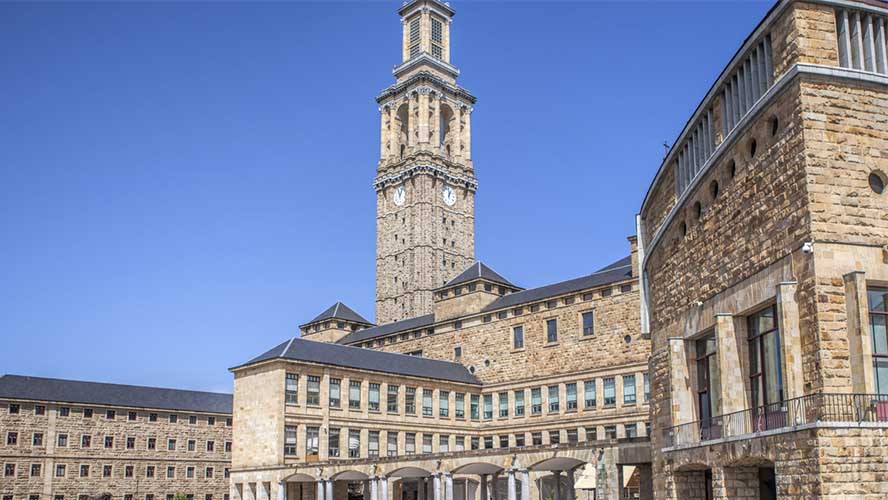
- El Molinón Stadium: El Molinón is the oldest professional football stadium in Spain and the home ground of Real Sporting de Gijón. Book a guided tour and visit the dressing rooms, the tunnel leading out onto the pitch, the pitch, the press room and other corners of the Stadium.
- The Gijón Atlantic Botanical Gardens: Located 2 km from central Gijón, opposite the Universidad Laboral, lies the 25-hectare site of the lush botanical gardens. Discover the 150-year old Jardín de la Isla (‘the Garden of the Island’) and the natural monument of La Carbayeda de El Tragamón, a natural forest with 400-year-old trees.
What to eat in Gijón
Gijón does not lack wonderful eateries, serving up delicious traditional Asturian cuisine. Don’t leave Asturias without trying the cachopo, the pitu de caleya, fabada and their local fish mousse. If you’re craving something sweet, order some casadielles – typical Asturian pastries. Grab a table at one of our recommended restaurants and indulge in some delicious fare before hitting the town and discovering the Gijón nightlife.
Need to pick up a few souvenirs? Visit the Gijón Market – there’s a little something for everybody.
























































